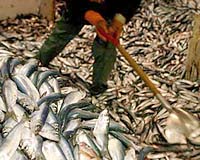 |
St. Louis MO (SPX) Aug 03, 2009 Rice is one of the most important crops worldwide, as it feeds over half of the world's population. Domesticated rice is an important supply of the world's rice. However, these strains are genetically static and cannot adapt to changing growing conditions. Traditional varieties, or landraces, of rice are genetically evolving and provide a pool of traits that can be tapped to improve crops worldwide. Research from Barbara A. Schaal, Ph.D., the Mary-Dell Chilton Distinguished Professor of biology in Arts and Sciences at Washington University in St. Louis, and her colleagues at Chiang Mai University in Thailand shows how natural genetic drift and agricultural practices of the traditional farmers combine to influence the genetic diversity of a given landrace of rice. Schaal is also involved in science policy, serving as vice president of the National Academy of Sciences and recently appointed to the President's Council of Advisors on Science and Technology. Schaal and her colleagues studied a landrace of rice grown by the Karen people in Thailand. They compared the genetic variation among the same variety of rice grown in different fields and villages. The genetics of the rice population fits the isolation by distance model, much like a native plant species. The further apart fields are, the more genetically distinct they are. The research, published in the Proceedings of the National Academy of Sciences, is funded by the McKnight Foundation and the Thailand Research Fund. In the lowlands of Thailand, farmers grow modern high-yield rice. In the hills, the Karen people practice traditional agriculture, growing ancestral varieties of rice with traditional practices. Expert farmers play a role in maintaining their crop's genetic diversity by exchanging and choosing seeds to plant the following year. "It's interesting to see how the expert farmers interact with the plants. For example, there was a purple mutation that occurred in one of the expert farmer's fields. He was very curious about it. He took the seeds and grew it off in a corner because he wanted to see what it looked like and tasted like. That's probably how humans domesticated plants, smart people were making smart choices in what to plant and grow," Schaal said. Many crops grown today have been genetically optimized to consistently give a large yield. Seeds are purchased from a supplier and the plants are all genetically similar. "Most modern varieties of crops, like corn in the Midwest or high-yield rice in the lowlands of Thailand, are artificial constructs developed by plant breeders. They are extraordinarily important in feeding the world. But they are static and not evolving in farmer's fields," Schaal said. The rice that the Karen people grow is genetically dynamic, due to natural drift and the farmer's artificial selection. Each year, the farmers choose the seeds that grow best in their fields, which may differ in soil type, elevation, and temperature from other fields, to plant next season. Their crop is constantly evolving in response to local conditions. "My colleagues believe that those local varieties bred within a village are better than any one single variety could be. Under these circumstances, the farmers have it right," Schaal said. Although most agriculture in the United States focuses on growing high-yield crops to produce food for people living in cities, landraces of corn and other crops exist in seed banks. "There is a movement among Native Americans in Arizona to grow ancestral varieties of crops. These varieties are important because they are adapted to hot and dry conditions, something that will become more prevalent as our climate changes," Schaal said. Time will tell if those farmers "get it right" too. Share This Article With Planet Earth
Related Links Washington University in St. Louis Farming Today - Suppliers and Technology
 World's fisheries at risk of collapse, but recovery is possible: study
World's fisheries at risk of collapse, but recovery is possible: studyChicago (AFP) July 30, 2009 The world's fisheries are at risk of collapse, but recovery is possible if governments act to manage commercial fishing, a comprehensive study published Thursday has found. Several regions in the United States, Iceland and New Zealand have made significant progress in rebuilding stocks devastated by decades of overfishing through careful management strategies. But the study, published in ... read more |
|
| The content herein, unless otherwise known to be public domain, are Copyright 1995-2009 - SpaceDaily. AFP and UPI Wire Stories are copyright Agence France-Presse and United Press International. ESA Portal Reports are copyright European Space Agency. All NASA sourced material is public domain. Additional copyrights may apply in whole or part to other bona fide parties. Advertising does not imply endorsement,agreement or approval of any opinions, statements or information provided by SpaceDaily on any Web page published or hosted by SpaceDaily. Privacy Statement |